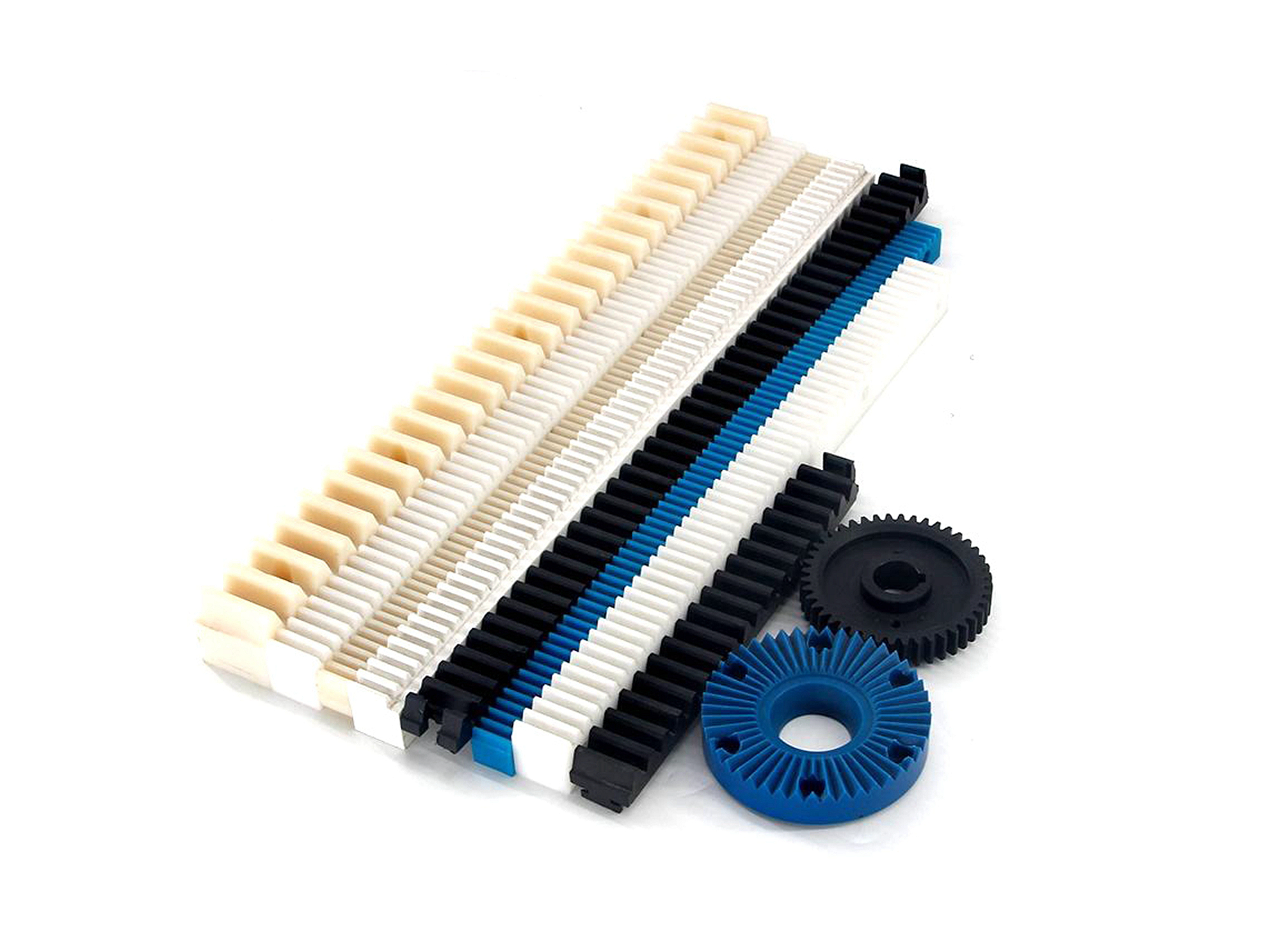High-Performance Plastic CNC Machined Components for Oil and Gas Equipment
Introduction to Plastic CNC Machined Components for Oil and Gas
In the oil and gas industry, components must withstand harsh conditions like high pressure, extreme temperatures, and exposure to aggressive chemicals. High-performance plastic CNC machining offers a reliable solution for producing durable components such as seals, bearings, and valve seats. Materials like PEEK, PTFE, and UHMW are machined to tight tolerances, providing excellent resistance to wear, chemicals, and heat. These components are critical for ensuring the performance and longevity of oil and gas equipment.
With precision CNC plastic machining, the oil and gas industry benefits from custom-designed, high-strength components that reduce maintenance costs, improve operational efficiency, and maintain safety. Plastic materials like PEEK and PTFE offer low friction, superior chemical resistance, and high thermal stability, making them ideal for extreme environments found in oil and gas exploration, drilling, and production.
Material Performance Comparison for Plastic Parts in Oil and Gas Equipment
Material | Tensile Strength (MPa) | Thermal Conductivity (W/m·K) | Machinability | Chemical Resistance | Typical Applications | Advantages |
|---|---|---|---|---|---|---|
100-150 | 0.25 | Excellent | Excellent | Seals, bearings, valve seats | High temperature stability, chemical resistance | |
20-40 | 0.25 | Excellent | Superior | Gaskets, seals, lubrication components | Low friction, non-stick, chemical resistance | |
25-50 | 0.44 | Good | Good | Wear-resistant liners, bushings, bearings | Excellent wear resistance, low friction | |
60-70 | 0.3 | Excellent | Moderate | Gears, bushings, valve components | High strength, dimensional stability |
Material Selection Strategy for Plastic Parts in Oil and Gas Equipment
PEEK (Polyether Ether Ketone) offers exceptional strength (100-150 MPa) and high-temperature stability, making it ideal for high-performance applications like seals, bearings, and valve seats. PEEK can withstand aggressive chemicals and temperatures up to 250°C, making it a perfect choice for critical oil and gas equipment components.
PTFE (Teflon) is well-known for its low friction properties and superior chemical resistance, making it perfect for gaskets, seals, and lubrication components. Its ability to function in extreme conditions with low wear and tear is vital for oil and gas systems.
UHMW (Ultra-High Molecular Weight Polyethylene) is used for wear-resistant liners, bushings, and bearings in oil and gas equipment due to its outstanding abrasion resistance and low friction properties. Its high toughness and impact resistance make it suitable for high-wear applications.
POM (Acetal) is known for its high strength and dimensional stability, which is ideal for applications requiring precise and durable components like gears and valve parts. POM offers good resistance to oils and solvents, making it suitable for various oil and gas applications.
CNC Machining Processes for Plastic Parts in Oil and Gas Equipment
CNC Machining Process | Dimensional Accuracy (mm) | Surface Roughness (Ra μm) | Typical Applications | Key Advantages |
|---|---|---|---|---|
±0.005 | 0.2-0.8 | Complex plastic components, custom shapes | High precision, complex geometries | |
±0.005-0.01 | 0.4-1.2 | Cylindrical plastic components, bushings | Excellent rotational accuracy | |
±0.01-0.02 | 0.8-1.6 | Precision mounting holes, assembly parts | Accurate hole placement | |
±0.002-0.005 | 0.1-0.4 | High-finish surface components | Exceptional surface smoothness |
CNC Process Selection Strategy for Plastic Parts in Oil and Gas Equipment
5-Axis CNC Milling is ideal for machining complex geometries from plastic materials like PEEK, PTFE, and UHMW, providing tight tolerances (±0.005 mm) and the ability to handle intricate shapes that are crucial for components like seals, valve seats, and bearings.
Precision CNC Turning ensures high rotational accuracy (±0.005 mm) for cylindrical components such as bushings and other high-performance parts used in oil and gas equipment.
CNC Drilling guarantees precise hole placement (±0.01 mm), making it ideal for creating mounting holes or ports in plastic parts necessary for properly assembling and integrating components.
CNC Grinding is used to achieve fine surface finishes (Ra ≤0.4 µm) for components that require smooth, high-quality surfaces, such as gaskets and seals that need to fit precisely and provide a high level of sealing performance.
Surface Treatment Performance for Plastic Parts in Oil and Gas Equipment
Treatment Method | Surface Roughness (Ra μm) | Corrosion Resistance | Hardness (HV) | Applications |
|---|---|---|---|---|
0.6-1.2 | Excellent (>800 hrs ASTM B117) | 300-400 | PEEK components, seals | |
0.4-1.0 | Excellent (>1000 hrs ASTM B117) | 400-600 | Plastic housing components | |
0.2-0.8 | Superior (>1000 hrs ASTM B117) | N/A | POM components, gears | |
0.2-0.6 | Excellent (>1000 hrs ASTM B117) | Moderate | PTFE components, gaskets |
Typical Prototyping Methods
CNC Machining Prototyping: Highly accurate prototypes (±0.005 mm) for functional testing of plastic components used in oil and gas applications.
Rapid Molding Prototyping: Quick-turnaround prototypes for plastic components like seals and gaskets, ideal for testing and evaluation.
3D Printing Prototyping: Fast and cost-effective prototyping (±0.1 mm accuracy) for initial design concepts.
Quality Inspection Procedures
CMM Inspection (ISO 10360-2): Dimensional verification of plastic parts with tight tolerances.
Surface Roughness Test (ISO 4287): Ensures surface quality standards for precision components.
Salt Spray Test (ASTM B117): Verifies corrosion resistance of plastic parts in harsh environments.
Visual Inspection (ISO 2859-1, AQL 1.0): Confirms visual and functional quality of plastic components.
ISO 9001:2015 Documentation: Ensures traceability and compliance with industry standards.
Industry Applications
Oil and Gas: Seals, bearings, valve components, bushings.
Aerospace: Precision gears, bearings, flight-critical components.
Automotive: Gaskets, seals, bushings, components in engines.
FAQs:
What are the benefits of using plastic components in oil and gas equipment?
How does CNC machining improve the precision of plastic components for the oil and gas industry?
Which high-performance plastics are best suited for oil and gas applications?
What surface treatments can enhance the durability of plastic parts used in extreme oil and gas environments?
What prototyping methods are best for developing oil and gas equipment plastic components?

